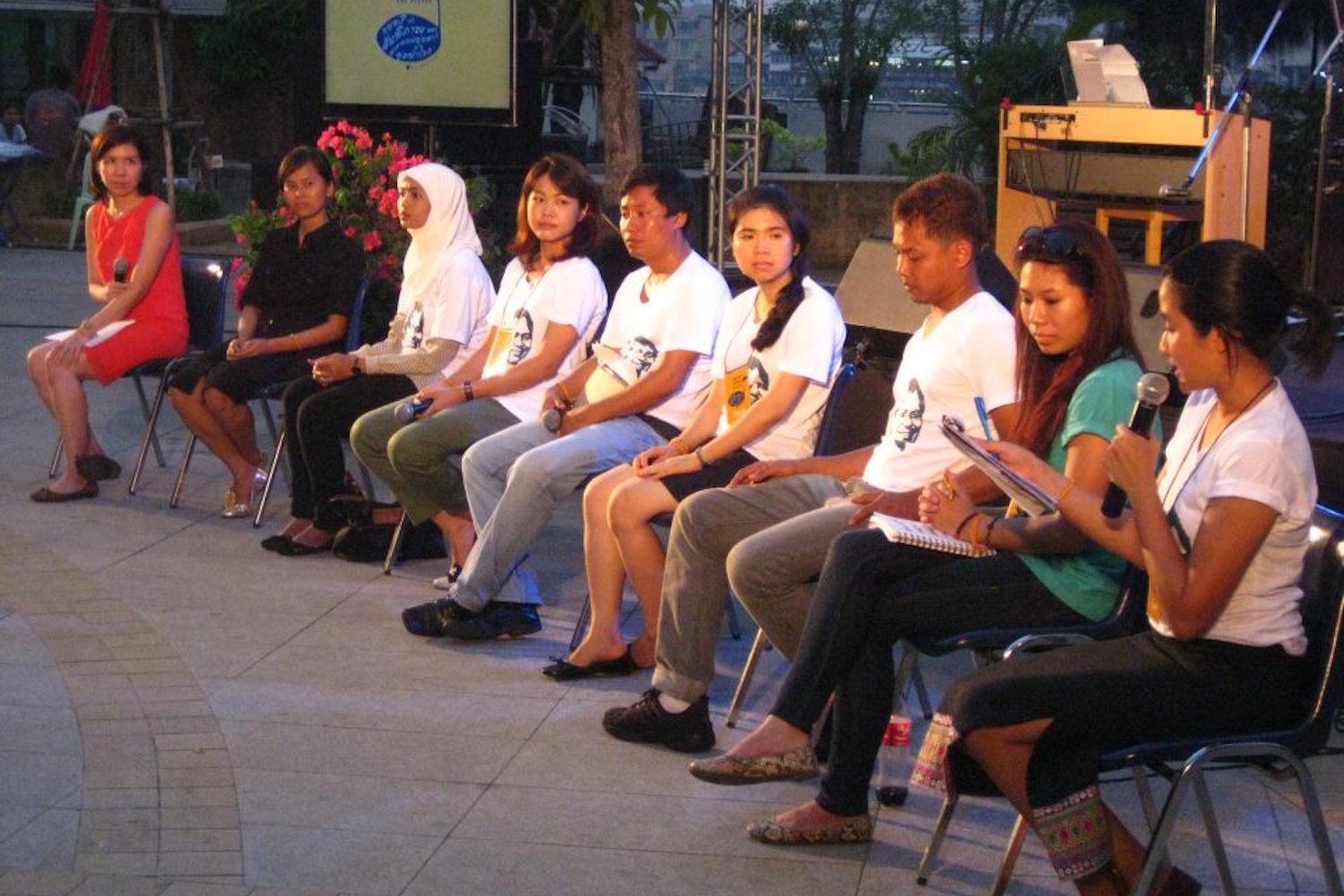Bangkok Post: 15 December 2015
The enforced disappearance of Sombath Somphone, a Lao activist who disappeared in December 2012, will be probed until there is an answer, a forum was told.
“We will never stop asking questions about the enforced disappearance of Sombath,” according to his wife, friends, and colleagues despite continued rebuttals by the Lao government which will assume the Asean chairmanship in the next two weeks.
Angkhana Neelapaijit, a National Human Rights Commissioner, read a message from Shui-Meng, Mr Sombath’s wife, at the Foreign Correspondents’ Club of Thailand in Bangkok Monday on the eve of the third anniversary of his disappearance.
“The pain and burden have continued, not lessened with time. Nothing can take the pain away … but I’m exhausted by the search for an answer as the state refuses to come clean,” read the message.
“There are times when the burden and pain are too heavy, but families of other enforced disappearance victims have continued to stand with us. So it’s no longer a personal struggle, it is for the sake of humanity and it is our right to pursue answers and the truth.”
Ms Angkhana is a member of “The Sombath Initiative” which has been pushing for an answer from the Lao government. The 2005 Magsaysay laureate was last seen on the evening of Dec 15, 2012 in Vientiane.
Sam Zarifi, International Commission of Jurists’ (ICJ) Asia Pacific regional director, showed new CCTV camera footage which was obtained from the area near the police checkpoint on the day of the abduction.
The footage showed the distinctive jeep in which Mr Sombath was travelling when he was stopped by police at a checkpoint. He is then seen being driven away from the checkpoint, as has previously been shown in the police CCTV footage.
But the new footage revealed that just a minute later, the jeep made a U-turn and drove back towards the city centre. The jeep has not yet been found. It is believed Mr Sombth was forced to get out of the car and was not in the jeep when it drove away from the checkpoint.
Meanwhile, another camera showed a pickup truck with flashing lights stopped near the checkpoint and a man believed to be Mr Sombath was forced into the truck before it was driven away to the north of the town.
“The CCTV footage was gathered by Mr Sombath’s family and sheds new light on what happened the night he disappeared. Even three years later, information is probably still available and the Lao government is obliged under international law to investigate this evidence fully. But when it was offered to Lao police investigators, they declined to even accept it,” said Mr Zarifi.
With the technology, this case was eminently solvable, the ICJ Asia Pacific director said.
Laos, he said, was a member of the International Convention on Civil and Political Rights and the Convention Against Torture, and even though it is not yet part of the Convention on Enforced Disappearance, iit must be obligated to investigate the case.
Ignorance and indifference to pursue other leads suggested a lack of political will in establishing the fate and whereabouts of Mr Sombath, Mr Zarifi said.
Laurent Meillan, of the UN Office of the High Commissioner of Human Rights, echoed the same concerns and disappointment that were previously expressed by other UN special rapporteurs on the lack of Lao response to UN correspondence on the matter. “They lack the political will. We haven’t received any response since September 2013,” he said.
Phil Robertson, Human Rights Watch deputy Asia director, said Laos was becoming increasingly aggressive as it prepared to assume the Asean chairmanship.
